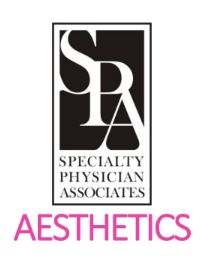Platelet-Rich Plasma (PRP)
Platelet-Rich Plasma (PRP) treatment is a natural, minimally invasive solution for skin rejuvenation and hair restoration. By using growth factors from your own blood, PRP promotes collagen production, tissue repair, and natural hair growth, making it an effective option for those seeking to improve skin texture, reduce fine lines, or address thinning hair. PRP is safe for most skin types and requires minimal downtime, providing gradual, noticeable results that enhance over time.
About PRP
What It Is
PRP, or Platelet-Rich Plasma, is a regenerative treatment that uses a patient’s own blood to promote healing and tissue regeneration. PRP is rich in growth factors that stimulate cell repair and collagen production, making it popular for aesthetic treatments to improve skin texture, reduce wrinkles, and even encourage hair growth.
How It Works
PRP treatment involves drawing a small amount of the patient’s blood, which is then placed in a centrifuge to separate and concentrate the platelets and plasma. This platelet-rich plasma is then injected or applied to targeted areas of the skin or scalp. The growth factors in PRP promote the body’s natural healing process, stimulating collagen production and tissue repair in the treated areas.
What To Expect
Preparation: The procedure begins with a blood draw, followed by processing the blood to isolate PRP.
Application: PRP is applied or injected into targeted areas based on individual goals, such as facial rejuvenation, scar reduction, or hair restoration.
Post-Treatment: Mild redness, swelling, or sensitivity may occur for 1-2 days. Most people can resume normal activities immediately, though results may take a few weeks as collagen production and cell regeneration gradually improve skin or hair health.
PRP typically requires a series of sessions, often spaced 4-6 weeks apart, to achieve optimal results, with maintenance treatments recommended for longer-lasting effects.
FAQs
-
PRP is suitable for individuals looking to improve skin texture, reduce fine lines or scars, or stimulate hair growth. However, it’s best to consult with a qualified provider to determine if PRP is right for you, especially if you have any blood disorders or are taking certain medications.
-
A PRP session typically takes 45–60 minutes, including the blood draw, processing, and application or injection of the PRP into the treatment area.
-
Discomfort is usually minimal, as most providers use topical numbing cream before injecting or applying the PRP. Some mild soreness or sensitivity may be felt in the treated area.
-
PRP can be applied to the face for skin rejuvenation, to the scalp for hair restoration, or even to certain body areas to improve skin tone and texture or support scar healing.
-
PRP typically requires little to no downtime. Mild redness, swelling, or tenderness may occur, usually resolving within a day or two.
-
Results develop gradually over several weeks, as collagen production and tissue regeneration occur. For hair restoration, results may become noticeable after a few months.
-
A series of 3–4 initial sessions, spaced about 4–6 weeks apart, is often recommended for optimal results. Maintenance treatments every 6–12 months can help sustain the effects.
-
PRP is generally safe, as it uses your own blood. Mild side effects, such as redness, bruising, or swelling at the injection site, may occur but typically resolve quickly. Rare complications, such as infection or inflammation, are minimized with proper technique and aftercare.
-
Avoid blood-thinning medications or supplements and alcohol for 48 hours before your appointment. Stay hydrated, as this can improve the quality of the blood sample.
-
Yes, PRP is often combined with treatments like microneedling or laser therapy to enhance rejuvenation results. Discuss your goals with your provider for a customized plan.
Contact Us: Enhance your natural beauty and experience rejuvenation at our Medspa. Contact us today to schedule your consultation and discover the transformative benefits of our personalized treatments.
Disclaimer: PRP treatment is a cosmetic procedure aimed at enhancing skin appearance and hair health. Results may vary depending on individual factors, including skin type and treatment area. PRP is not intended to diagnose, treat, cure, or prevent any medical condition. Possible side effects include minor swelling, bruising, or redness at the application site. Consult with a qualified provider to determine if PRP treatment is suitable for your needs.
